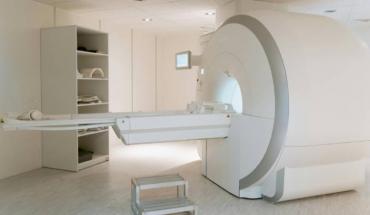Cardiovascular Disorders, Diagnosis
Cardiac Diagnostic Tests
New and advanced diagnostic tests and tools are constantly being introduced to further understand the complexity of disease, injury, and congenital (present at birth) or acquired abnormalities. The following are just a few of the diagnostic tests that have been used/are being used to further understand and identify cardiovascular disease. For more specific information, consult your cardiologist or other health care provider.
-
Electrocardiogram (ECG or EKG). A test that records the electrical activity of the heart, shows abnormal rhythms (arrhythmias or dysrhythmias), and can sometimes detect heart muscle damage.
-
Signal Averaged Electrocardiogram (SAE). A test that is much like an ECG, but takes longer because it records more information related to abnormal electrical activity.
-
Stress test (usually with ECG; also called treadmill or exercise ECG). A test that is given while a patient walks on a treadmill or pedals a stationary bike to monitor the heart during exercise. Breathing and blood pressure rates are also monitored. A stress test may be used to detect coronary artery disease, and/or to determine safe levels of exercise following a heart attack or heart surgery.
-
Echocardiogram (also known as echo). A noninvasive test that uses sound waves to evaluate the heart's chambers and valves. The echo sound waves create an image on the monitor as an ultrasound transducer is passed over the heart.
-
Transesophageal Echocardiogram (TEE). A test in which a small transducer is passed down the esophagus to provide a clearer image of heart structures.
-
Positron Emission Tomography (PET) scan. A nuclear scan that gives information about the flow of blood through the coronary arteries to the heart muscle:
-
PET F-18 FDG (Fluorodeoxyglucose) scan. A specialized PET scan which uses a form of glucose to help determine if any specific areas of heart tissue have experienced permanent damage due to decreased blood flow. It may be used after a heart attack to determine which procedure, such as angioplasty or stenting of the coronary arteries or bypass surgery, may be beneficial.
-
-
Thallium scans or myocardial perfusion scans:
-
Resting SPECT thallium scan or myocardial perfusion scan. A nuclear scan performed while the patient is at rest that may reveal areas of the heart muscle that are not getting enough blood.
-
Exercise thallium scan or myocardial perfusion scan. A nuclear scan performed while the patient is exercising that may reveal areas of the heart muscle that are not getting enough blood.
-
Adenosine or persantine thallium scan or myocardial perfusion scan. A nuclear scan performed on a patient who is unable to exercise to reveal areas of the heart muscle that are not getting enough blood. Special medications which stress the heart, like exercise, may be given.
-
MUGA Scans/Radionuclide Angiography (RNA) scans:
-
Resting Gated Blood Pool Scan (RGBPS), Resting MUGA, or Resting Radionuclide Angiography. A nuclear scan to evaluate how well the heart wall moves and how much blood is expelled with each heartbeat, while the patient is at rest.
-
Exercise Gated Blood Pool Scan, Exercise MUGA, or Exercise Radionuclide Angiography. A nuclear scan to evaluate how well the heart wall moves and how much blood is expelled with each heartbeat, just after the patient has walked on a treadmill or ridden on a stationary bike.
-
-
-
Holter monitor. A small, portable, battery-powered ECG machine worn by a patient to record heartbeats on tape over a period of 24 to 48 hours during normal activities. At the end of the time period, the monitor is returned to the doctor's office so the tape can be read and evaluated.
-
Event recorder. A small, portable, battery-powered machine used by a patient to record ECG over a long period of time. Patients may keep the recorder for several weeks. Each time symptoms are experienced, the patient presses a button on the recorder to record the ECG sample. As soon as possible, this sample is transmitted to the doctor's office for evaluation.
-
Tilt table test. A test performed while the patient is connected to ECG and blood pressure monitors and strapped to a table that tilts the patient from a lying to standing position. This test is used to determine if the patient is prone to sudden drops in blood pressure or slow pulse rates with position changes.
-
Electrophysiology study. A test in which insulated electric catheters are placed inside the heart to study the heart's electrical system.
-
Cardiac catheterization (also called coronary angiogram). A test in which a small catheter (hollow tube) is guided through a vein or artery into the heart. Dye is given through the catheter, and moving X-ray pictures are made as the dye travels through the heart. This comprehensive test shows: narrowings in the arteries, heart chamber size, pumping ability of the heart, and ability of the valves to open and close, as well as a measurement of the pressures within the heart chambers and arteries.
-
Magnetic Resonance Imaging (MRI) of the heart. A diagnostic procedure that uses a combination of large magnets, radiofrequencies, and a computer to produce detailed images of organs and structures within the body. MRI of the heart may be used to evaluate the heart valves and major vessels, detect coronary artery disease and the extent of damage it has caused, evaluate congenital defects, and detect the presence of tumors or other abnormalities. The cardiac MRI may be used prior to other cardiac procedures such as angioplasty or stenting of the coronary arteries and cardiac or vascular surgery.
-
Magnetic Resonance Angiography (MRA) of the heart. A specialized type of MRI procedure used to evaluate blood vessels in the heart.
-





















